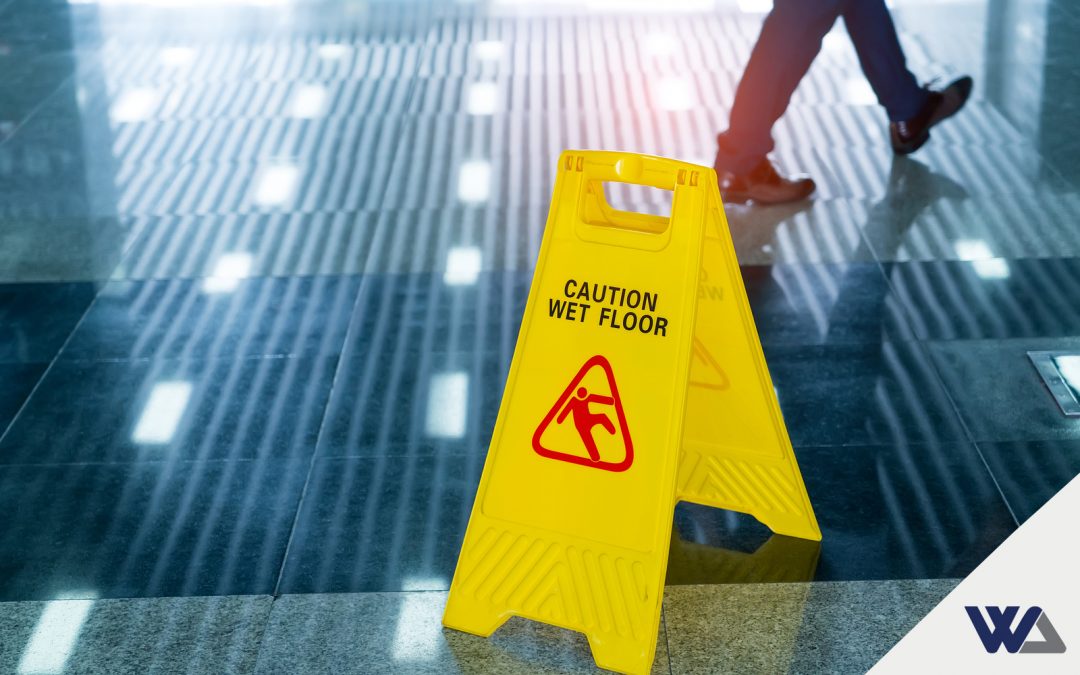Introduction
The long wait for the Director of Occupational Safety and Health Services (hereinafter referred to as “the Director”) established under the Work Injuries Benefits Act, 2007 (hereinafter referred to as “WIBA”) to hear work injury related claims is now over. This is after the Supreme Court of Kenya in a Judgment in Petition No. 4 of 2019 – Law Society of Kenya vs. Attorney General & Another affirmed the provisions of WIBA as being constitutionals.
Since the office was created under the WIBA and came into force on the 2nd June 2008, the office of the Director has never been operationalized due to the dispute over its mandate and the constitutionality of the WIBA. Immediately after the Act came into place, the Law Society of Kenya petitioned the High Court vide Petition No. 185 of 2008 LSK vs. The Attorney General and Another. The High Court agreed with the petitioner and held that various sections of the WIBA were unconstitutional to the retired constitution.
Aggrieved by the decision of the High Court, the Attorney General appealed the decision vide the Court of Appeal vide Civil Appeal No. 133 of 2011 – Attorney General vs. L.S.K. & Another. The court of Appeal reversed the high court judgment noting that the impugned provision did not contravene the former constitution. On further appeal to the supreme court vide Petition No. 4 of 2019 LSK vs. Attorney General, the Supreme Court on the 3rd December 2019 upheld the judgment of the Court of Appeal noting that the impugned provision did not contrive of the former constitution
Reason for upholding the Court of Appeal judgment by the Supreme Court
- The Supreme court took into consideration the mischief that WIBA sought to remedy. The court noted the repealed Workmen’s Compensation Act, Cap 230) only provided for compensation for workmen for injuries suffered in the course of their employment while WIBA provides for compensation to employees for work related injuries and diseases contracted in the course of their employment. WIBA further makes it compulsory for every employer to provide an insurance cover for all their employees against bodily injury, diseases or death sustained and arising out of and in the course of their employment. After looking into the above, the Court held:
“…It is therefore evident that WIBA’s purpose is a nobble one. It is meant to offer protection to employees should they get injured or contract diseases until the course of their duties in addition, its reach is far wider from the predecessor, the Workmen’s Compensation Act Cap 236.
- The Court noted that the intention of the act is not to limit access to Court but to create a statutory mechanism where any claim by an employee under the act is subjected, initially to a process of dispute resolution starting with an investigation and an award by the Director aforesaid and thereafter on appeal to the Employment and Labour Relations Court. The dispute before the Director the Court stated, can be determined as alternative dispute resolution mechanism envisaged under Article 159 of the Constitution.
- The Court further delved into the role of the Directors in making a firm decision that the Director ought to be the first point of call in addressing work injury claims. The court was emphatic and stated that:
“(64) the Directors inquiries are essentially preliminary investigations. such mechanism, set out by statute must be left to run their full course before a Court intervenes. Not only does this simplify procedures to ensure that Courts focus on substantive rather than procedural justice, but also professionally address the problem of backlog of cases, enhances access to justice, encourages expeditious disposal of dispute and lowers the costs of accessing justice.
(65) There is also added strength the inquiries by the Directors inevitably means that work injuries and accidents are well captured and understood by his office. He can for example take measures or instruct his offices to hasten remedial administrative measures to avoid further concurrence or similar incidents.”
- The Court was convinced that there are adequate supervisory mechanisms as when performing the duties under the Act, the Director in essence performs quasi-judicial These functions are thus subject to review or appeal to the ELRC under its appellate and supervising powers. On this the court stated:
“(69) …..the Act provides for legal redress to the industrial court (now Employment and Labour Relations Court) and therefore judicial assistance can be sought by aggrieved parties from the decision of the Directors and the court can make a determination with respect to all relevant matters arising from those directions.”
- The Court was also not convinced with the Appellant’s argument that Act discriminates against employees in the manner of medical examination. It stated inter-alia:
“(80)…. We agree with the Court of Appeal that there is no prejudicial treatment in the manner medical examinations are conducted. We say so because, firstly, while the directors can designate a medical practitioner to examine an employee…the director is a neutral adjudicating party who neither acts for the employer and/or employee in doing so. Secondly and as a safeguard against the Directors arbitrary use of his power, the employer can with the approval of the directors refer the employee to its own medical practitioner. Lastly but not least, an employee at his or her own expense, is at liberty to have a medical practitioner of his or her choice present at the time of the examination ‘
(81) The effect of Section 25 of the Act therefore is to ensure that the Medical report is objective, fair, accurate and sound. This section consequently secures the interest of both employees and employers’ advances equally and does not accord differential treatment to any party.
- On the issue of retrospective application and how matters under the Act are to litigated, the Court started that those matters must proceed under the legal regime that they were instituted. It stated:
“(85)… we note that it is not in dispute that prior to the enactment of the Act, litigation relating to work injuries has gone on and a number of the suits had progressed upto decree stage, some of which were still being heard while others were still at the preliminary stage. All such matters were being dealt with under the then existing and completely different regimes of law…the Claimant in those pending cases have legitimate expectations that upon the passage of the Act, their cases would be conducted under the judicial process which they had invoked.
Effect of the Judgment
From the judgment, we can deduce the following as the effects of the said decision:
- The primary jurisdiction of work injury claims is vested in the Director of Occupational Safety and Health Services. The Director is required to make inquires that are necessary to decide upon any claim or liability in accordance with WIBA.
- The Employment and Labour Relations Court will have appellate and supervisory jurisdiction over the Director. Indeed, in Said Mohamed vs. Diamond Industries Ltd (2018) eKLR, the Court has emphatically held that ELRC jurisdiction in WIBA matters is secondary. Thus, Magistrates Courts have been divested of the jurisdiction to hear as first port of call or appeals, matters regarding work injury related claims.
- Matters that had been filed after the High Court judgement overturned various provisions of WIBA, which may have been at execution stage or hearing and had stalled after the Court of Appeal delivered its Judgement, can now proceed before the Magistrates Courts based on the Claimant’s legitimate expectation.
- The decision has however left a lacuna on how appeals that may arise from pending work injury claims before the Magistrates Courts will be handled. Traditionally, appeals from the Magistrates Courts lie with the High Court and not ELRC. However, WIBA provides that matters under the Act do lie with ELRC. The unanswered question therefore will be, will such appeals lie with the High Court or ELRC?
- The decision ensures access to justice to all parties. As was held by the Court of Appeal in Civil Appeal No. 287 of 2017 – Law Society of Kenya-Nairobi Branch vs. Malindi Law Society (2019) eKLR, Tribunals and Magistrates Courts have the widest presence in Kenya. The ELRC Act provides for original and appellate jurisdiction on matters regarding work injury claims. Thus, the Director in performing the functions under the Act, acts in a quasi-judicial nature and thus, the decision of the Supreme Court is in conformity with the decision of the Court of Appeal in Civil Appeal No. 287 of 2017 on the jurisdiction of the specialized Courts. Indeed, the ELRC has appellate and supervisory jurisdiction over decision of WIBA or Magistrates Courts, wherein the latter hears matters regarding to termination of employees.
- The decision will ensure expeditious disposal of work injury claims as matters before the Director will not have to conform to the rigid Civil Procedure Rules. However, there is need to have regulations enacted to guide the operations before the Director and a creation of registry to ensure proper administration of matters before the Director.
- The decision further promotes fair labour practices and the right to health of the employees under the Constitution. The Act places an obligation on employers to ensure that every worker is accorded reasonable working conditions and the highest attainable standards of health. Under Section 25 of the Act, once a claim has been lodged, the employee submits to a medical examination which allows them to have an Independent Medical Practitioner of their choice present during the examination and at their own expense.
- The proceedings before the Director are less cost-effective as compared to those before the Courts. However, there ought to be gazette regulations on cost of filing claims before the Director and other incidentals.
- The decision does not divest of employee’s right to representation. Indeed, a claim for compensation to the Director can be made by or on behalf of the Claimant. An employee, their dependents and even the employer, can retain an Advocate to represent their interest throughout the process, just as there is legal representation before the Tribunals.
- The decision further reinforces and upholds the concept of exhaustion of statutory remedies as was expounded in the case of Geoffrey Muthinja Kabiru & 2 Others vs. Samuel Munga Henry & 1756 Others (2015) eKLR, wherein the Court of Appeal stated that where a statute provides for an alternative dispute resolution mechanism that precedes the Courts, the mechanism must be exhausted before invoking the jurisdiction of the Courts. Thus, the Supreme Court’s decision furthers the principles underpinning judicial authority under Article 159 of the Constitution that justice shall not be delayed and further promotes the use of alternative dispute resolution.
- The decision underscores the principle that in declaring an Act unconstitutional, the Court has to interrogate the mischief that was meant to be corrected and take into account the history leading to the enactment of the impugned legislation.
- On the flipside however, though the decision is welcomed and will ensure access to justice, appeals and reviews arising from the decision of the Director may lead to a backlog of cases before the ELRC. The ELRC as currently constituted is understaffed and does not have wide coverage. Other than appeals that may arise from the Magistrates handling employment related matters, appeals and reviews from the decision of the Director on work injury claims will compound an already worse situation.
Conclusion
In conclusion, the over a decade debate on the constitutionality of WIBA has now fully been settled. The Director has now legal obligation to hear and determine work injury related claims. The Director will have to make inquiry once a claim is lodged or notice is given under the Act who will be an initial point of call for all decisions under the Act. The Presiding Judge of the ELRC will however need to give administrative guidelines on the operations before the Director or cause the publications of guidelines in consultation with the relevant bodies to give effect to WIBA.












